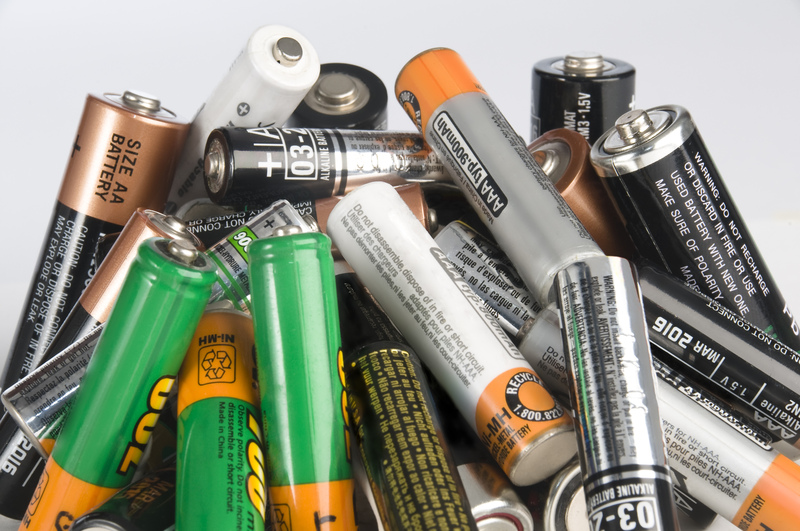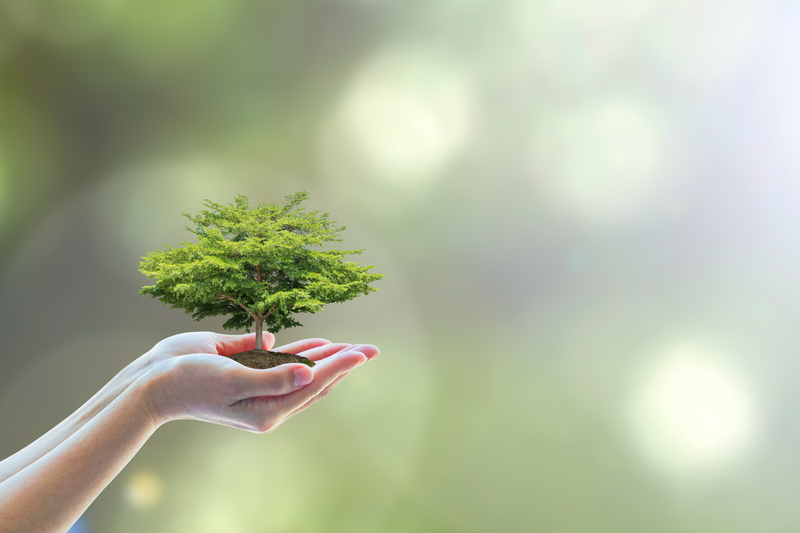Breaking Down Barriers to Stop Microplastic Pollution
Microplastic pollution has emerged as one of the gravest environmental challenges of the 21st century. Scattered throughout our oceans, soils, rivers, and even the air we breathe, these tiny pieces of plastic--often invisible to the naked eye--pose immense threats to ecosystems and human health. Stopping microplastic pollution demands a comprehensive, innovative approach. In this guide, we'll break down what microplastics are, the barriers obstructing change, and the most promising solutions to tackle this pervasive issue.

Understanding Microplastic Pollution
What Are Microplastics?
Microplastics are plastic particles smaller than 5 millimeters. They originate from two main sources:
- Primary microplastics: Intentionally manufactured as microbeads for products like exfoliating scrubs, industrial abrasives, and some cleaning agents.
- Secondary microplastics: Formed from the breakdown of larger plastics due to sunlight, wind, abrasion, and other environmental factors.
Where Do Microplastics Come From?
Microplastics enter the environment through diverse pathways, including:
- Personal care products containing microbeads
- Textile fibers shed from synthetic clothing during washing
- Fragmentation of plastic waste in landfills and natural habitats
- Industrial processes and road runoff laden with plastic particles
- Improper disposal and lack of recycling infrastructure
The Impact of Microplastics on Ecosystems and Health
Microplastic contamination affects aquatic life, soil health, and potentially, our own wellbeing. Marine organisms often ingest these particles, which then accumulate up the food chain, a process known as bioaccumulation. Recent research has detected microplastics in tap water, table salt, and even human placentas, highlighting the pervasive nature of the issue.
Health risks associated with microplastics stem from toxic chemicals used in plastic production and the pollutants they attract in the environment. These substances can disrupt hormonal systems, cause reproductive issues, and lead to inflammatory responses in living organisms.
Barriers to Stopping Microplastic Pollution
1. Inadequate Regulation and Legislation
One of the
largest obstacles in combating microplastic pollution is inconsistent regulation. Many countries lack plastic waste management laws, and those that do often offer exemptions for certain industries.
Microplastics in cosmetics, for example, have been banned in the United States and parts of Europe, but these bans don't apply everywhere. Neither do they cover secondary microplastics, which form the bulk of the crisis.
2. Lack of Public Awareness
Many consumers remain uninformed or misinformed about the impact of microplastics and how their everyday habits contribute to pollution. Without widespread awareness, pressure on policymakers and industries to change remains weak.
3. Insufficient Waste Management Infrastructure
Poor waste collection, minimal recycling facilities, and open dumping create a fertile ground for plastic debris to fragment into microplastics. Some regions still lack basic waste disposal systems.
4. Economic Dependence on Plastics
Global industries, from packaging to textiles, rely heavily on plastics for their affordability and functionality. Transitioning to sustainable alternatives can appear costly, leading to resistance among businesses and consumers alike.
5. Scientific Uncertainties
While the dangers of microplastics are clear, ongoing research is needed to fully understand their effects on human health, wildlife, and the environment. This knowledge gap makes it harder to draft specific, evidence-based policies.
Strategies to Overcome Barriers and Stop Microplastic Pollution
Regulatory Solutions: Setting the Standard
Governmental intervention remains essential in curbing the spread of microplastics. Here are key steps regulators can take:
- Enact bans on primary microplastics in personal care and cleaning products, as many countries have begun to do.
- Strengthen waste management policies with clear guidelines for collection, sorting, and advanced recycling.
- Implement Extended Producer Responsibility (EPR) laws, making manufacturers responsible for the lifecycle of their plastic products.
- Require rigorous reporting and transparency from industries producing or handling plastics.
Boosting Innovation: New Materials and Technologies
Innovative solutions play a pivotal role in reducing microplastic generation:
- Biodegradable alternatives: The development and deployment of biodegradable packaging, textiles, and product components can cut down plastic waste at its source.
- Advanced filters and washing machine solutions: Fitters for washing machines are now effective at capturing microfibers, preventing them from entering waterways.
- Plastic-eating bacteria and enzymes: Research is underway to harness microorganisms that break down plastic at a molecular level.
- Microplastic capture technology for wastewater treatment facilities can stop particles before they reach natural ecosystems.
Engaging Consumers: The Power of Awareness
Empowering individuals is key to breaking down the barriers of microplastic pollution. How can people make a difference?
- Opt for natural fiber clothing such as cotton, wool, or linen instead of synthetics.
- Use products labeled "microbead free" and avoid personal care items with plastic exfoliants.
- Support plastic bans and sustainable packaging movements in your community.
- Properly sort and recycle waste to minimize contamination and leakage into the environment.
- Join citizen science projects to track and research microplastics in local environments.
Global Initiatives and Collaboration
International Regulations and Agreements
Tackling microplastic pollution demands global cooperation. The United Nations Environment Programme (UNEP), European Union, and several multilateral organizations are actively working to create binding agreements on marine plastic litter and microplastics. The anticipated global plastics treaty aims to standardize regulations and responsibilities worldwide.
Corporate Responsibility and Industry Solutions
Major companies are now stepping up to address their plastic footprints:
- Adopting "design for the environment" principles to reduce single-use plastics in packaging and products
- Developing take-back schemes and circular economy initiatives that keep materials in use for longer
- Investing in sustainable materials research for next-generation packaging and textiles
- Committing to zero plastic waste targets by specific deadlines
Community and Grassroots Movements
Local communities and NGOs play a vital grassroots role in removing existing plastics, documenting pollution, and supporting policy changes. Beach cleanups, education campaigns, and advocacy work are cornerstones of the broader fight against microplastics.

Case Studies: Success Stories in Combating Microplastic Pollution
Ban on Microbeads in Cosmetics
In 2018, the United Kingdom officially banned microbeads in rinse-off cosmetics, joining a growing list of nations addressing primary microplastics at the source. This measure led to significant reductions in microplastic concentrations in local waterways and demonstrated the feasibility of targeted policy.
Innovative Industry Solutions
A Swedish developer introduced removable filters for washing machines, which capture up to 90% of microfibers shed during laundry cycles. France has since mandated all new washing machines include such filters starting in 2025--providing a replicable model for the world.
Community Cleanup Initiatives
In Southeast Asia, local NGOs are uniting volunteers for large-scale river and beach cleanups, while leveraging citizen science to collect data on microplastics. These movements highlight how, when empowered, communities can make measurable environmental impacts.
Future Prospects and The Road Ahead
The challenges posed by microplastic pollution are daunting--but far from insurmountable. A multi-pronged strategy that addresses regulatory reform, technological innovation, industry accountability, and consumer engagement can make a real difference.
Research continues to uncover the full extent of microplastic impacts, but even without all the answers, decisive preventive action is justified and necessary. Solutions require:
- Stronger global agreements and enforcement mechanisms
- Investment in scientific research and breakthrough technologies
- Corporate transparency and sustainable product design
- Public awareness and behavioral change
What Can You Do to Help Stop Microplastic Pollution?
- Reduce reliance on single-use plastics--use reusable bags and containers.
- Choose natural-fiber clothes and limit synthetic fabrics.
- Support legislation and companies committed to tackling plastic pollution.
- Participate in local clean-up events and recycling initiatives.
- Educate friends, family, and community about the dangers of microplastics.
Stopping microplastic pollution demands action at every level--from individual choices to international treaties. By breaking down barriers, spreading awareness, and investing in real solutions, we can chart a course to cleaner water, healthier ecosystems, and a more sustainable future.
Together, we have the power to stop microplastic pollution for good.